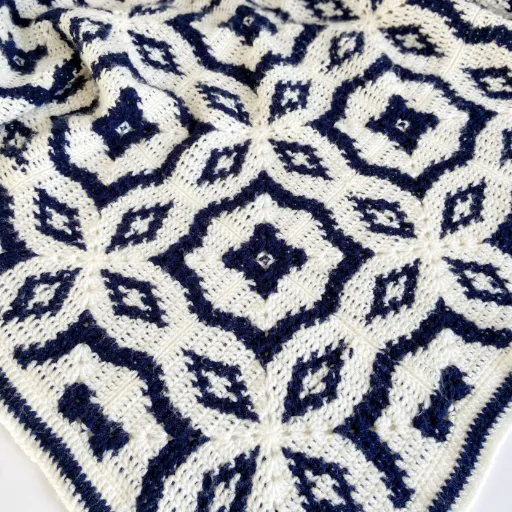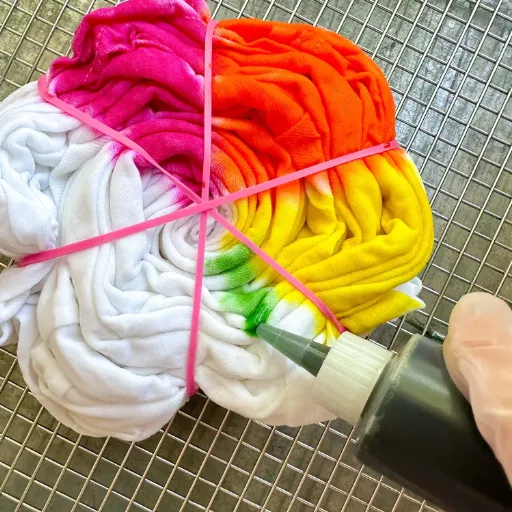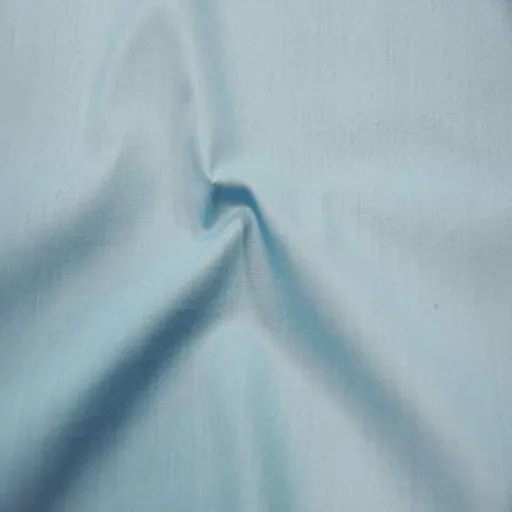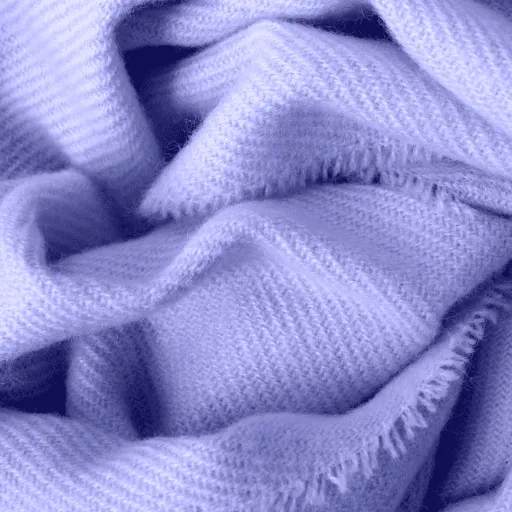Acrylic has truly become a well-known fabric especially owing to its vast applications across different industries. Hemmed in with light properties and weight properties, acrylic fibers, in essence, mimic the elegance of wool while offering a much greater robustness and ease of care. But what exactly is this acrylic fabric, and what are the reasons that make acrylic so famous? This paper addresses some of the key features that make acrylic fibers stand apart and identify some of its practical uses in everyday life and the advantages and disadvantages associated with it. This may augur well for those infatuated with fashions, styles, home interior modifications, or perhaps merely inquisitive about the way fabrics work; this piece embroils one with the ins and outs of acrylic fiber and the multitude of applications it can be made to support.
Introduction to Acrylic Fiber
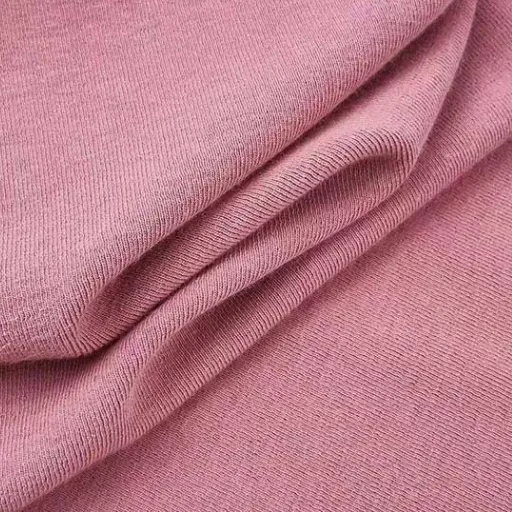
Acrylic Fibres Defined
Acrylic fibre is a synthetic fibre that is made from polyacrylate polymers. Fibres must consist of at least 85% acrylonitrile to be considered acrylics. These fibres are manufactured through a complex chemical and manufacturing process, including polymerization to make long chains of molecules that will be extruded to become fibers.
Key Characteristics
Acrylic is specially appreciated for its versatility and durability. It is lightweight, soft, and warm and serves as a great alternative to wool. Its resistance to moths, chemicals, and sunlight enhances the utility of the acrylic fibres for a wide range of applications. However, what makes acrylic even more special is its fast drying ability, its ability to hold its shape better than most natural fibres, and is relatively cheaper manufacturing and to purchase.
For example, acrylic fiber, a major reference point in industry, is used in fashion products such as sweaters, hosiery, and sports wear, in upholstery, curtains, and blankets, among other uses. Acrylic owes its considerable success in this area to its properties of sensorial resistance and color maintenance, which can endure frequent washings. Thus, the qualities that impart dyed appearance and structural resilience to bars, most closely corresponding with cotton proved most useful, while also establishing it as indispensable in textile and fashion crafts.
History and Development
From 1930 onwards, research for a synthetic organic fiber, acrylic, began due to the growing need for the development of fibers in chemistry. Contrary to natural fibers, wool and cotton, which have been searched for very little, the basic steps in science would have to be concentrated on polymer chemistry for the development of acrylic fibers. The raw material, acrylonitrile, was discovered during this breakthrough. Considerations of economy, industry, the end product, and key polymerization techniques were pivotal to the advent of commercial acrylic fibers, alongside types with wool-like characteristics.
Between 1940 and 1950, acrylic was predominantly recognized as a good substitute to wool. There have been recent efforts by the fiber world to create acrylic to be suitable for their own needs. Acrylic, despite its many charms, is soft, lustrous, and durable. Acrylics have been significantly appreciated as it has good color retention and strength to elongate, which makes the product durably competitive. The latter two make it particularly useful for applications in furniture and upholstery.
Further innovations brought the improvement in the quality of acrylic fiber, which in turn broadened its use in specific areas. These specially engineered acrylic fibers attain better thermal performance so as to expand their use in different industries, ranging from sports equipment to interior design. Starting from being very popular for their elasticity, today, acrylic fiber stands strong as a companion to the economy in textiles.
Overview of Acrylic Fabric
Acrylic fiber is a synthetic textile that is made up of polymer fibers and primarily made of acrylonitrile. Driven as an alternative to wool, it is a lightweight, soft material known for its indestructibility and resilience. The cancellation of its yet small size, resembling natural fibers, enables warmth to be funneled through the fabric itself. This renders warmth and is much maintained, however warm and toasty against the skin than acrylic fiber is. At another end, it is an all-rounder, leaving it in on the making of fashion garments, household furnishings, and outdoor clothing.
✨ Notable Features
Among its fabrics, acrylic fiber is inherently very good at color retention and has great colorfastness. Ergo, it is highly desired to be used in the sweatshirts, blankets, and decorative textiles that require strong color. Acrylic possesses moisture-wicking and quick-dry properties, enhancing the range of places where it can be placed, and also strengthening its service to outdoor and activewear textiles.
On the plus side, acrylic fabric comes equipped with certain disadvantages as well. It is far less breathable than natural fibers, making it less comfortable in warm weather. Acrylic is a synthetic creation that can occasionally build up static cling and perform its inadequacy as far as environmental friendliness in comparison to natural alternatives. While this is the ongoing trend owing to innovation, working to raise the fabric’s performance and quality is very pivotal.
Properties of Acrylic Fiber
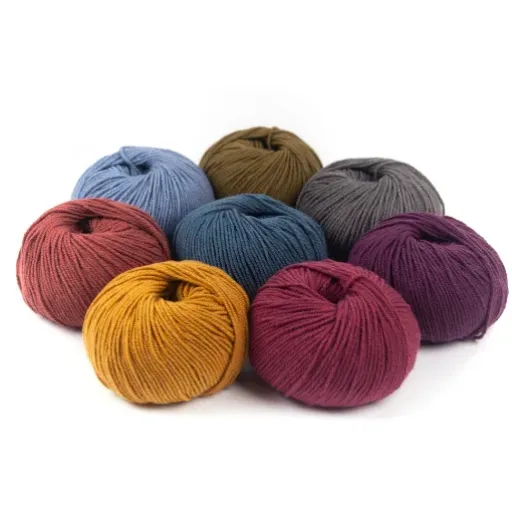
Mechanical Properties of Acrylic Fiber
Having excellent durability and resilience to wear and tear, acrylic fibers have very good elastic strength that would prevent the fiber from breaking when stretching. This feature makes acrylic fibers suitable for applications with resilience and lasting performance requirements, such as upholstery and outdoor fabrics.
The elasticity of acrylic fibers is another significant mechanical property. Acrylic fibers can be stretched and returned to their original size and shape, attaining resistance towards the creation of wrinkles as well as in providing durability to finished products. Any elasticity that it possesses will preserve the adherence to the structure of the garments and things, notwithstanding much utilization.
💡 Important Property
Moreover, acrylic fiber has low moisture absorption, which indicates that its mechanical properties are less influenced by humidity or water exposure. As a result, the dimensionally stable fabric material will not deform in size over time. These properties combine to explain why acrylic continues to be used in many industries despite many disadvantages.
Comparison with Other Fibers
Acrylic fibers are lightweight, durable, resistant to moisture, and more cost-effective compared to cotton, wool, and polyester.
| Parameter | Acrylic | Cotton | Wool | Polyester |
|---|---|---|---|---|
| Weight | Lightweight | Moderate | Heavy | Lightweight |
| Durability | High | Moderate | Low | High |
| Moisture Absorption | Low | High | High | Low |
| Cost | Low | Moderate | High | Low |
| Softness | Moderate | High | High | Moderate |
| Elasticity | High | Low | Moderate | High |
| Shrinkage | Low | High | High | Low |
Durability and Maintenance
Thus, acrylics and polyesters rank high in durability due to their strength, enhanced capacity to resist wear and tear and the suitability for their use over a longer period and in higher stress situations. Especially resistant to weather-related harm with polyester providing superior tensile strength and resilience. On the other hand, cotton and wool are less durable. Cotton may be worn out over time, particularly with too much washing, while wool may be weakened after exposure to too much water or a strong hand.
In terms of maintenance, polyesters and acrylics provide relatively low-maintenance materials. Both, for starters, do not shrink or ruffle and have very good resistance to fading, so keeping them at their best looks requires little effort. While cotton is easy to maintain, it must be treated with more care to avoid shrinking or fading over time. Wool, if well cared for, is simply the best but a real headache; getting it cleaned is a big issue because of the delicate balance needed in the washing and drying process so that it doesn’t shrink or felt up.
🧺 Care Tips for Different Fabrics
- Acrylics and Polyesters: Wash at moderate temperatures for best utility
- Cotton: Air-dry to prevent shrinkage
- Wool: Hand wash or dry-clean to maintain integrity
Production Process of Acrylic Fabric
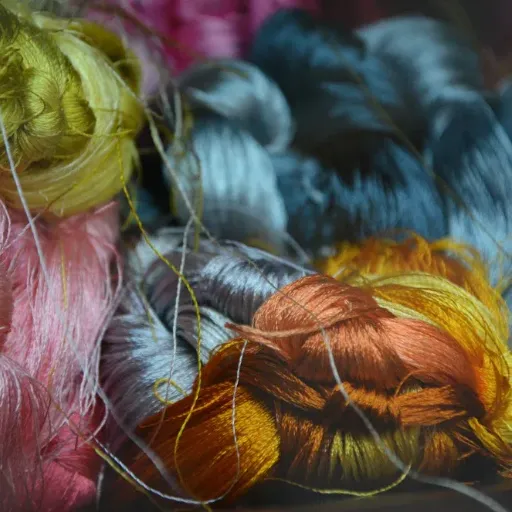
Raw Materials Used
Manufactured from a synthetic polymer called polyacrylonitrile, acrylic fibers largely come from petroleum or natural gas. Polyacrylonitrile is the main ingredient in the fabric and lends it strength, softness, and lightness, among other properties. It is polymerized in such a way that long chains are formed through controlled chemical reactions, which are then placed in a spinneret for later fashioning into fibers.
To fine-tune their performance characteristics, other substances or comonomers may be added during fabrication processes. These serve to enhance their flexibility, dye retention, and resistance to wear. Common comonomers often used are methyl acrylate or vinyl acetate, which help to confer numerous versatile qualities upon the textiles.
Once the raw polymer is prepared, the fibers are commonly treated with special finishes to aid in best usability. For instance, they may need a coating for anti-pilling or heat resistance for their intended application. So, these carefully chosen raw materials and procedures make the acrylic fabrics acceptable to the various demands of textile processing, moving all the way from garments to home furnishings.
Steps in Acrylic Fabric Production
- Polymerization starts the process:
The polymerization of acrylonitrile, the main raw material, is the first step in the process. It is normally achieved by using free-radical polymerization, which initiates polymer chain formation by combining acrylonitrile with a catalyst. Several comonomers can be added at this stage to improve the final fabric’s flexibility and dye-absorbing power. - Spinning:
When the polymerization process is complete, the polymer obtained will be dissolved in solvent to make a spinning solution, which is often referred to as a dope. The dope is then extruded through spinnerets or dies, which can be likened to a showerhead, to form continuous filaments. There are two spinning methods: wet spinning and dry spinning, wet spinning being the most versatile and most commonly used method because of its cost-effectiveness. In other words, over 90% of acrylic fiber production in the world is accomplished using wet-spinning technology. - Stretching and Drawing:
For the refinement of properties, extruded fibers are undertaken by stretching and drawn of the polymer molecules, which makes the material more durable and improves stitching strength. During this stage, the fiber can be manipulated to fill them according to the end use in fabric. - Washing and Stabilizing:
Another stage in the spinning and stretching of fibers requires curing washes for any of the remaining thread finishes or solvents. Heat treatment or chemical additives help ensure the versatility and longevity of the fibers. Furthermore, certain types of treatments might also include antistatic, flame-retardant, and antibacterial finishes. - Crimping and Cutting:
They should be crimped in a process in order to give the fibers a more natural feel, where the waves or curls are introduced to the strands. Furthermore, the crimped fibers are then cut into staple lengths or made into continuous filament yarns for later use in weaving or knitting. - Dyeing and Finishing:
Owing to the fantastic retention of some vibrant hues, acrylic fibers gain attention in the dyeing process, carried out as a regular phase. A bright and uniform coloring is a result of the application of high-pressure methods that require cationic classes of dyes. According to numerous industry sources, over seventy percent of acrylic fabrics are now dyed in environmentally sound ways, hence showing the industry’s commitment to modern, environmentally sound practices. - Conversion into Textiles:
At this stage of application, the processed fibers or yarns find their way to various fabrics like woven, knit, and tufted. Their versatility allows vast ranges to be cloaked in acrylic fabrics for applications in clothing, beddings, upholstery, and even outdoor gear.
With new trends in polymer chemistry as well as other aspects of material production, acrylic fabric producers are working on innovation-oriented performance gains and process optimization geared towards meeting global demand for this versatile textile.
Innovations in Production Techniques
Recent advancements in acrylic fabric production are focusing on improving efficiencies from the perspective of environmental sustainability and quality. Energy-efficient spinning and weaving processes are one key area of innovation, minimizing energy consumption and thus lessening the environmental impact. Emotionally, and texture-wise, these processes are improving acrylics, hence making them ‘taste’ better for various uses.
Another area seeing a lot of attention with respect to development is eco-friendly dyes and finishing techniques. It is worthwhile to make a comparison of interest to any given manufacturer concerning water-based dyes and non-toxic chemicals. These dyes aid in the reduction of pollution while meeting profoundly strict environmental health and safety standards. The methods, in exchange for brilliant and long-lasting colors, themselves protect the environment and are consumer-friendly.
Furthermore, the incorporation of automation systems and high-tech machinery has been a game-changer in the production of acrylic fabrics. Automation adds to precision, decreases production time, and reduces waste during fabrication. The whole repositioning is aimed at helping those producers to supply the global rise in demand while at the same time maintaining uniform high quality, thus reiterating that producers of acrylic fabrics operate in an all-time-high degree of distinguished and consistent quality as a textile.
Applications of Acrylic Fabric

Use of Acrylic Fabric in Textiles
Acrylic fabric is famous in the textile sphere for its versatility. It is mainly employed in clothing technology for the warming of these garments, such as sweaters, socks, and activewear. Hence, it can mimic wool very exquisitely. It is light, tough, and wrinkle-resistant for a sufficient time to make them appropriate garments for both regular and outer climates.
Another key use of acrylic fabric in the textile industry may be categorised as home furnishings. The upholstery, curtains, and bed linen used in trendy home interior decoration are made of acrylic fibers. The resistance to fading and moisture ensures that the furniture and furnishings retain their aesthetic appeal and useful life. Also, acrylic fabric is ideal from this perspective, as it is suitable for either indoor or outdoor furniture under tough conditions, including sun or humidity.
Most certainly, acrylic fibre is a superb fit and comprises industrial as well as special uses, such as sailcloths, awnings, and protection gear, due to its strength and resistance to weather. As very favorable opportunities have their affordability, their capabilities, thus, make it possible for many sectors to use them for creating strong and sturdy products for multiple needs.
Acrylic Fabrics in Fashion
Versatility
Acrylic can imitate the appearance and texture of natural fibers like wool, making it perfect for sweaters, scarves, and hats
Durability
Does not shrink, wrinkle, or endure the elements, maintaining its original appearance over time
Affordability
Cost-effective option for consumers wanting fashionable clothing without premium prices
Acrylic fabrics are hugely popular in the fashion industry mainly because of their versatility, durability, and pricing. This type of synthetic fabric can imitate the appearance and texture of natural fibers like wool, making it the finest choice for crafting into warm, lightweight, and cost-effective garments such as sweaters, scarves, and hats. The ability of the fibers to withstand these vibrant colors in the dyeing process adds to their use for producing trendy and visually appealing clothing.
The ruggedness of acrylic fabric makes it a good choice for outerwear. Acrylic does not shrink, wrinkle, or endure the elements, thus ensuring the garment keeps to its original clean appearance over time. Quick drying and resistant to mildew, acrylic provides a good option for clothing to be worn in different weather conditions or out and about on regular activities. Acrylic is often mixed with other fibers to enhance the performance and aesthetics of clothes.
Home Goods and Outdoor Products
Acrylic fabric is widely used in home goods and outdoor products for its durability, versatility, and cost-effectiveness. Its resistance to weather and elements makes it an excellent material for outdoor purposes, such as outdoor furniture cushions, awnings, and umbrellas. Unlike some natural fibers, acrylic does not easily fade or break down when exposed to sunlight or moisture, keeping the items looking good for a long time to come.
🏠 Popular Home Applications
- Rugs and upholstery
- Throws and blankets
- Outdoor furniture cushions
- Awnings and umbrellas
- Curtains and drapes
Indoor applications will consider acrylic fabric for, among others, the rugs, upholstery, and throws, which give a wool-like softness and are light in weight yet easy to clean. This synthetic material is gentle on skin; therefore, it must be softer to slumber under or walk on. It also maintains color vibrancy, thus aiding the gorgeousness of home decor, all on a budget without any compromise on style.
Acrylic fabric finds favor in both residential and commercial interiors for being low-maintenance. Being highly resistant to staining and mildew, these features aid in keeping the material in shape even after so much wear and tear. These characteristics along with being cost-effective, make acrylic an indispensable material for cultural goods and outdoor consumer goods.
Sustainability and Environmental Impact
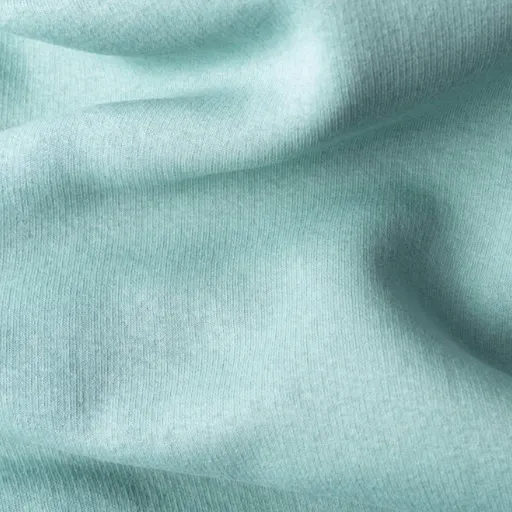
Challenges Associated with Acrylic Fiber
⚠️ Environmental Concerns
- Non-renewable Resources: Produced from petrochemicals acquired from fossil fuels
- Energy-intensive Production: Manufacturing process releases toxic emissions contributing to climate change
- Limited Recycling: Difficult composition makes effective recycling challenging
- Landfill Impact: Slow decomposition in landfills contributes to environmental strain
Another predominant issue linked to acrylic fibers is related to environmental implications. These fibers are produced from petrochemicals, which are acquired from non-renewable fossil fuels. Even though the technology of production is energy-intensive and pollution-intensive from its release of toxic emissions, the very same carbon-rich emissions contribute to climate change. To add to nature, acrylonitrile and other chemicals are toxic in nature and pose risks to the well-being of the workers in the factories as well as other living beings and vegetation in the environment.
Another of the major problems that arises with recycling acrylic fibers is that acrylic fiber products are hard to effectively recycle. Unlike other natural and synthetic fibers that can be reclaimed and subsequently reprocessed, acrylic is a medium with very limited options for recycling because of its difficult composition. Thus, limited recycling options often lead to the disposal of acrylic products in landfills. This further torments environmental conditions due to the delay in decomposition.
With the increase in recycling technologies, development engineers are coming up with methods to reduce the production of conventional plastics. The design of a biodegradable plastic that can be efficiently crushed and degraded into harmless molecules by naturally occurring organic processes is the need of the hour. With plenteous, bacterially immobilized enzymes is another approach to make plastic truly biodegradable. In principle, all innovations that characterize sustainability will have overfulness.
Eco-Friendly Practices in Production
The focal point of environment-friendly production practices sheds light on the methods of sustainability and resource efficiency, thus minimizing our environmental impact. Many new company initiatives have gained momentum, too, reducing waste, energy conservation, and the use of energy sources that can renew themselves. An illustration could be shown by the use of recycled materials which actually reduce demand for more raw materials that would have otherwise come from deforestation, mining, and other extraction activities. In addition, water-saving systems and reliance on renewable energy sources, for instance, the power of the sun or wind, can help in a substantial reduction of emissions and conservation of resources in processes of production.
♻️ Sustainable Strategies
- Use of recycled materials to reduce raw material demand
- Water-saving systems in production
- Renewable energy sources (solar and wind power)
- Development of biodegradable or compostable materials
- Cleaner manufacturing technologies and advanced recycling systems
Another vital innovative strategy is developing and using biodegradable or compostable materials which are environmentally safe. They break down easily through natural biological processes and thus, there will not be a long-term presence of these materials in the environment. For example, in the products, plants built of natural fibers will address minimizing the stress on ecosystems, or catering for the stress, fabricated packaging that actually disintegrates and decays under natural conditions. It is about an attitude of falling in line with the worldwide desire to combat ocean and landfill plastic waste.
Another important path is innovative production technologies, such as cleaner manufacturing technologies and advanced recycling systems. Lowering the emissions of harmful byproducts and increasing energy efficiency in factories not only reduces environmental impacts but also reduces future costs for companies. Moving towards sustainable production methods is very essential for combating the issues related to industrial activities, thus paving the way for a healthier planet for the forthcoming generations.
Future of Acrylic Fiber in Sustainable Fashion
The future of acrylic fiber in sustainable fashion largely depends on the development of eco-friendly production methods and the adoption of innovative technologies. Though acrylic fibers are traditionally known for their durability, lightweight feel, and low price, they are always characterized by environmental destruction related to the use of non-renewable resources as well as the generation of microplastics. However, this scenario seems to be changing with the latest advancements in recycling technologies and bio-based materials.
🔮 Future Directions
Circular Economy: Recycling acrylic fibers to produce new material saves resources and lowers waste generation
Chemical Recycling: Processes to break down spent acrylic material and convert it back into reusable fiber
Bio-based Polymers: Introduction of eco-friendly raw materials derived from renewable sources
One major shift is circularity gaining more importance in the textile world. Recycling acrylic fibers to produce new material saves resources, lowers waste generation, and minimizes the use of virgin raw material. Viable chemical recycling processes are being researched to pull apart the spent acrylic material warm and convert it back into reusable fiber, thus decreasing the amounts of waste reaching a landfill and minimizing resource exhaustion. This change in trend towards a circular economy model of the industry may well herald a new role for acrylic fiber in sustainable fashion.
Here we can also witness the introduction of eco-friendly raw materials, such as utilizing bio-based polymers derived from renewable sources. These advances all seek to diminish the significance of fossil fuels while maintaining the essential properties of acrylic. For sustainable fashion to prevail, entities including manufacturers, brands, and consumers must team up and support implementations and similar materials. Showing continued dedication and financial investment in sustainable technologies will allow acrylic to find a more favorable angle in the fashion industry.
Frequently Asked Questions (FAQ)
References
-
Wikipedia: Acrylic Fiber – Offers a detailed overview of acrylic fibers, including their composition, properties, and applications.
-
Sewport: What is Acrylic Fabric – Explains the production process, properties, and uses of acrylic fiber fabrics.
-
ScienceDirect: Acrylic Fibers – Provides in-depth scientific insights into the engineering and applications of acrylic fibers.
-
Textile Exchange: Acrylic Fiber Overview – A resource for understanding the sustainability and production of acrylic fibers in the textile industry.
-
Britannica: Acrylic Fiber – A trusted encyclopedia offering a concise explanation of acrylic fiber’s characteristics and uses.








